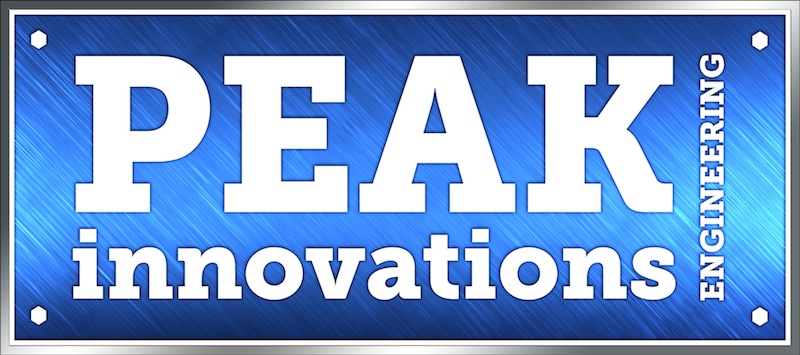Ford Motor Company and Peak innovations Engineering Investigate Bolt Load Retention in Lightweight Materials
ULTRASONIC TESTING WITH THERMAL CYCLING USED TO EVALUATE RETAINED TENSION OF BOLTED JOINTS IN MAGNESIUM AND CARBON FIBER SUBFRAMES
CHALLENGE
In the race to improve fuel efficiency, new materials are being investigated to reduce the weight of a vehicle’s body and chassis. Ford Motor Company contacted PEAK innovations Engineering for the evaluation of prototype subframes made of lightweight materials, specifically magnesium and carbon fiber. While these materials can provide the required structural properties while saving weight over the steel components they are intended to replace, the high stresses encountered in bolted joints present challenges due to material creep properties. The problem of creep is exacerbated in-vehicle locations subjected to high temperatures, such as those near the exhaust system. Ford’s request to PEAK was to study bolt load retention in front subframe joints subjected to alternating temperatures.
SOLUTION
PEAK and Ford partnered to finalize a suitable method to measure joint performance. This method included ultrasonic measurement to obtain real-time readings of bolt tension while the joints underwent thermal cycling. Within each subframe, each of the joints – lower control arm attachment, roll restrictor attachment, and steering gear attachment – were evaluated for retained tension over thermal cycles between -30 and 100 degrees Celsius. The Ford request included readings while the joints were at temperature, so in addition to standard preparation for ultrasonic measurement, PEAK developed a method for permanent lead attachment to the ultrasonic sensors that allowed remote readings while the thermal chamber was operating. A method was also developed to correct for temperature-influenced changes in ultrasonic time delay. PEAK recorded bolt tension during installation to specified assembly torques and then throughout the thermal cycling process that lasted approximately 700 hours.

Figure 1: Test Bolt affixed with permanent lead for ultrasonic readings inside the chamber

Figure 2: Subframe joints assembled with bolts prepared for ultrasonic readings

Figure 3: Assembled subframes in the thermal chamber
RESULTS
At the conclusion of testing, PEAK compiled and analyzed the data and submitted a comprehensive report. Through Ford’s particular material selection and use of washers for load distribution, the magnesium subframe joints retained a high level of bolt tension. However, in joints without metallic compression limiters, creep of the carbon fiber composite resulted in a high level of relaxation. Overall, the study provided valuable data during the research and development stage of lightweight material implementation. Ford was able to gain confidence in the use of magnesium alloys in structural bolted joints, and also gain insights into design considerations for use of carbon fiber composites in these applications.
PEAK SERVICES PROVIDED
- Tension Relaxation Testing with Ultrasonics
- Thermal Cycling Testing
- Ultrasonic Bolt Tension Measurement
Peak innovations Engineering: For the Ultimate Confidence in Fastening
Company Profile:
Peak Innovations Engineering has a highly technical team to design, test, validate, and enhance the bolted joints within your product application. Joint development and testing are all we do, so we do it better than other available options, both internal and external. Why consume your resources in engineering and problem-solving areas that are secondary to your core responsibilities when we can take care of them quickly, definitively, and cost-effectively?

